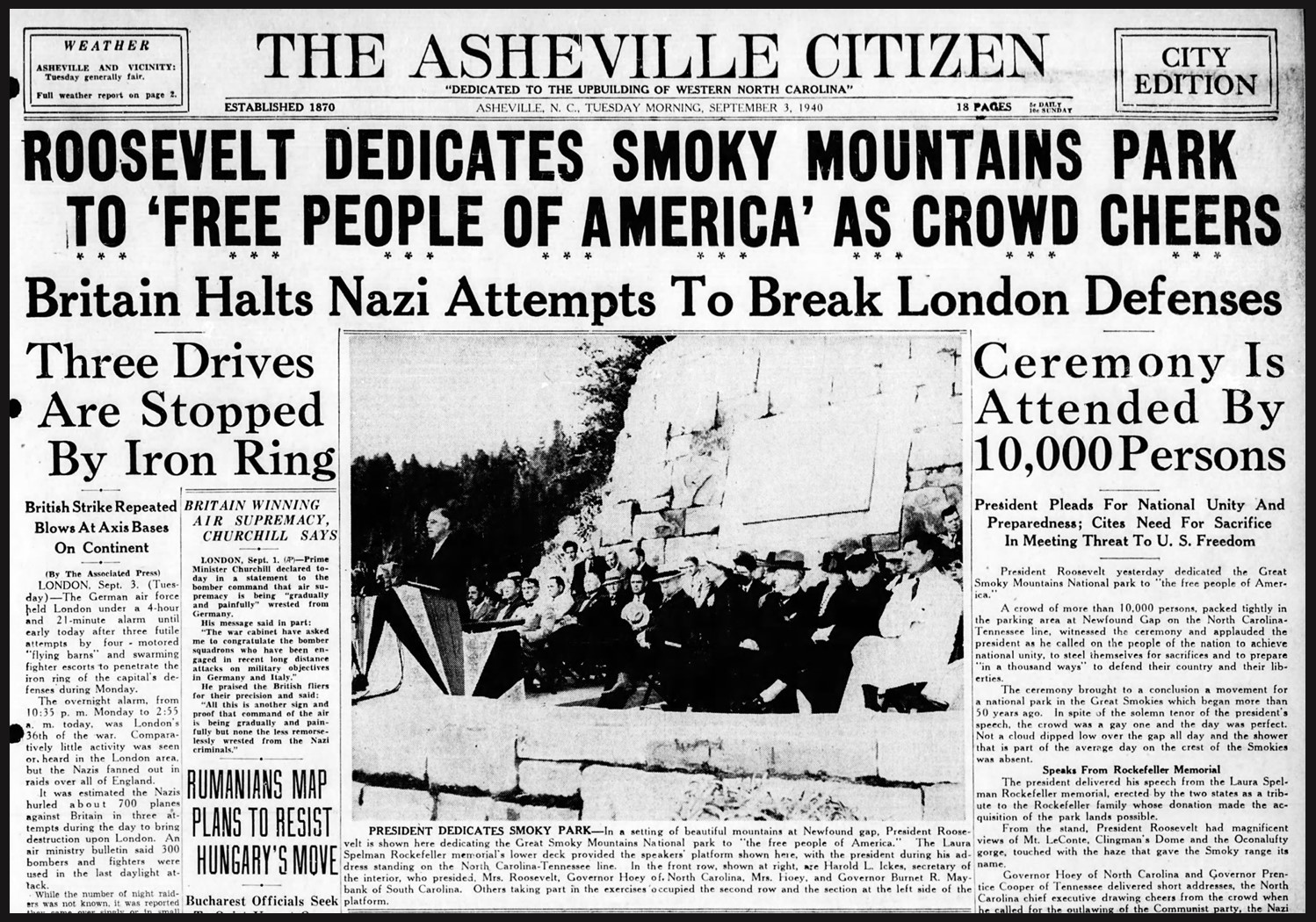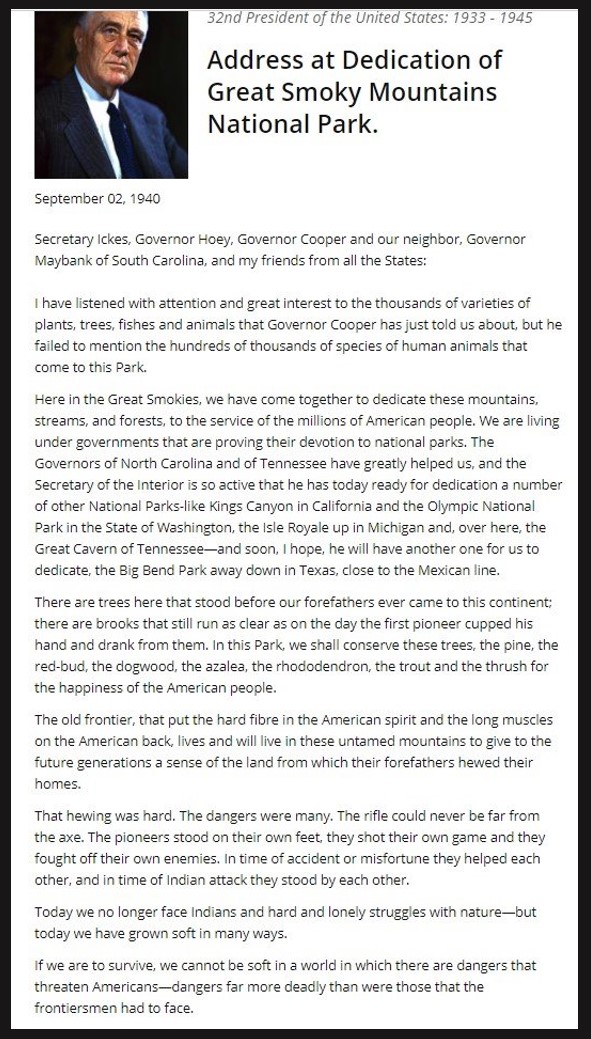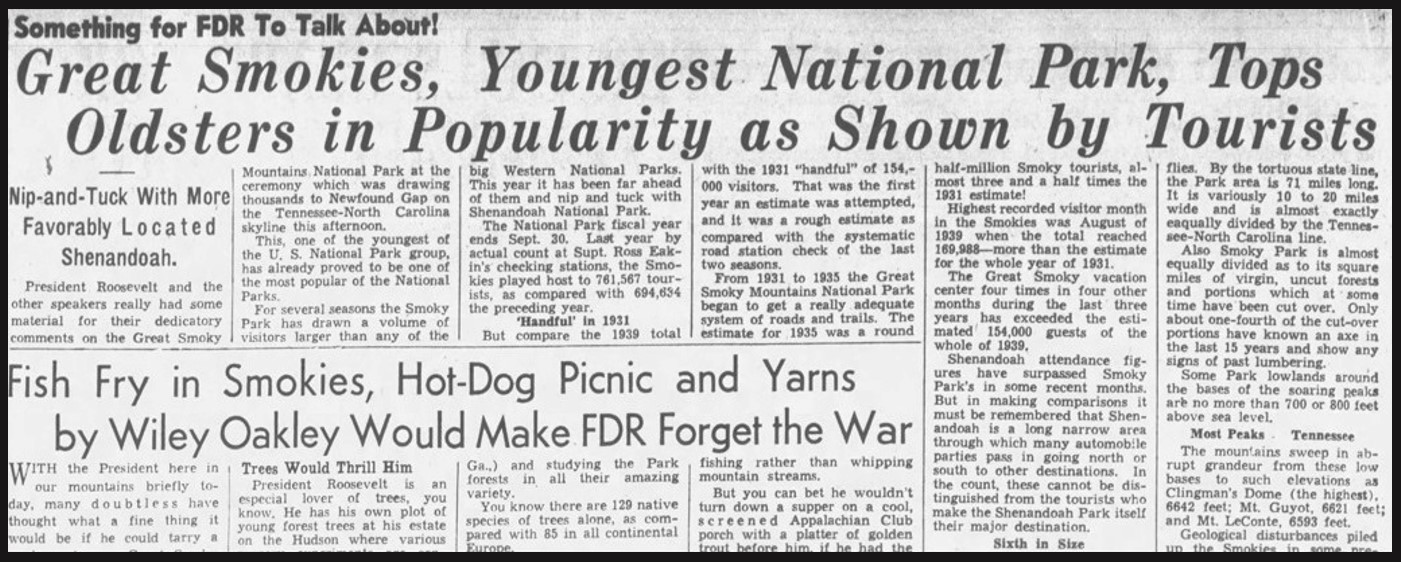
On this Day in WNC history: Though he made his remarks on the Tennessee side, on this day in 1940, President Franklin Roosevelt officially dedicated the Great Smoky Mountains National Park with a speech at Newfound Gap.
The push for a park or forest reserve in North Carolina (and eastern Tennessee as well, for that matter) began decades earlier as concerned leading citizens as well as common mountain residents recognized the growing destruction wrought by industrial logging following the arrival of the railroad to the region in the 1880s. From 1899-1905, the Appalachian National Park Association (later called the Southern Forest Reserve Association) advocated for conservation of the region’s vital forests which contributed to the region’s tourism appeal and also helped lessen flooding by retaining moisture, among other things. This early effort also saw marked completion between North Carolina and Tennessee for the first eastern national park, with both hoping to attract tourists. In 1911, North Carolina ceded the first eastern tract of land purchased for forest conservation under what became the National Forest Service, but the competition for a national park continued: all while logging companies kept cutting.
In 1926, President Coolidge signed legislation creating the Great Smoky Mountains National Park with both local citizens and the legislatures of the two states contributing funds. The federal government purchased lands through the 1930s, acquiring tracts from residents as well as timber companies. This gave some cash-poor locals opportunities, but often came with great sadness as traditional livelihoods and communities were displaced, sometimes through eminent domain. At the same time, the NPS strove to create an imagined “wilderness” in the park, and interpreted those who still lived there in pockets such as Cades Cove as “pioneers” or relics of the first white settlers. In his speech, dedicating the park to the American people, Roosevelt alluded to this “frontier” and “untamed” area, attracting national news coverage. Visitation quickly boomed, and for several decades, the Smokies and the adjoining Blue Ridge Parkway have been the most visited of our national parks.


